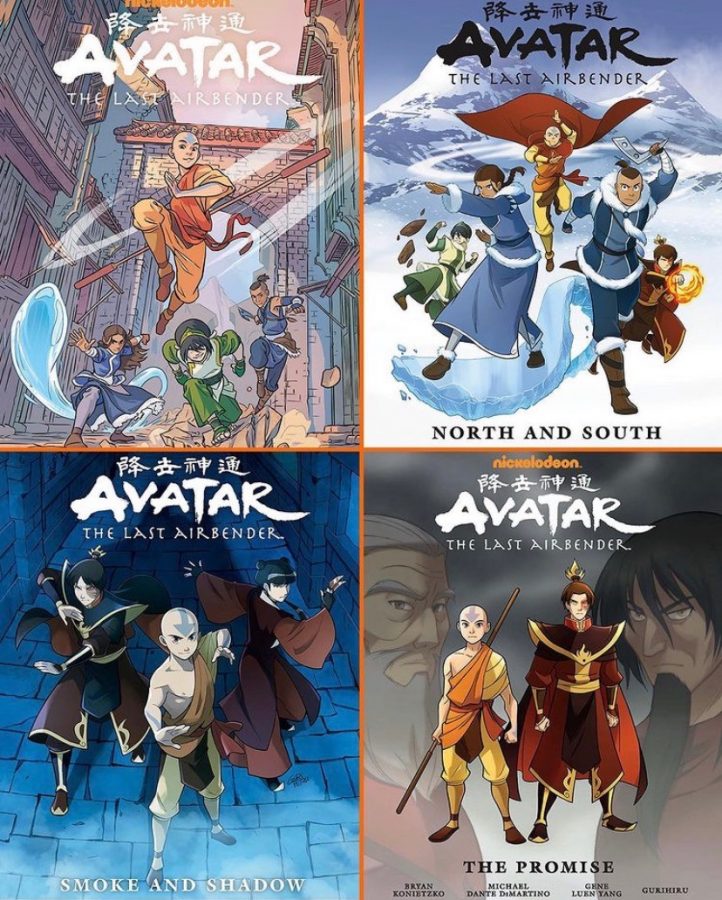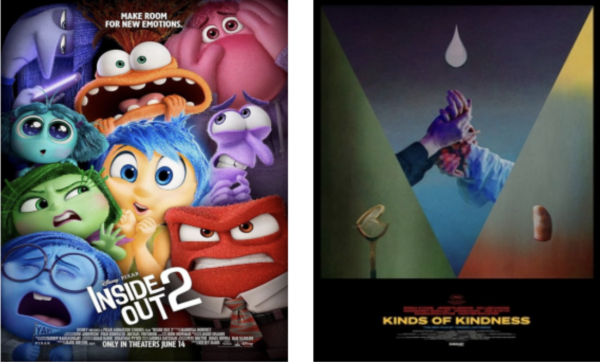Aang’s Return: Avatar Comes Back Strong
December 21, 2020
Over the past few months, binging TV shows has become a common pastime as people are not able to go to restaurants, hang out with friends, or do activities in ways they otherwise might. One of the most popular shows to binge over the summer and into this school year has been Nickelodeon’s Avatar: The Last Airbender. This recent star began airing in 2005 and finished in 2008, with it’s pilot episode, titled The Boy In The Iceberg, introducing fans to a magical world where talented ‘benders’ could manipulate the four elements- water, fire, earth, and air.
The show takes place during the “Hundred Year War”, with the Fire Nation, one of the main elemental kingdoms, declaring war on the rest of the world in an attempt to take it over. The only thing in their way is the Avatar, a being capable of wielding all four elements, and able to be reincarnated into a new body after dying.
The first episode also introduced fan-favorite characters, such as the sibling duo Katara and Sokka. Both from the Southern Water Tribe, Katara is the last waterbender from her nation, and Sokka is a self-proclaimed warrior as well as the show’s comic relief. Additionally, the episode introduces the titular Avatar, Aang, a twelve-year-old boy and the world’s last airbender.
The show is a fairly lighthearted adventure series, with the main characters hopping around the world to interesting places to try to find teachers so that Aang can master all the elements while butting heads with the show’s many antagonists: Fire Prince Zuko, ruthless Admiral Zhao, the cunning Princess Azula, and the mysterious Fire Lord Ozai.
The show has an episodic nature, tending to stick to single plots that get resolved by the end of each episode, but manages to balance that with feeding into the main narrative. Many iconic episodes, such as season two’s Tales of Ba Sing Se and season 3’s The Beach, aren’t actually necessary to understand the main plot, but are some of the most iconic episodes in the show.
So why is this show, a show that aired ten years ago on a children’s TV network, so popular right now? Well, besides the fact that there is an increase of TV watching due to the pandemic, Avatar was added back to Netflix at just the right time, on May 15th, 2020, right when the realization the pandemic filled summer was likely going to be very long and very boring had sunk in. Additionally, the lighthearted and comedic tone was just what people stuck in their houses all day need, providing escapism for those worried about what was to come.
The show is fun for all ages, despite airing on a network primarily for kids, so there wasn’t a particular demographic to rely on. Nolan Keating (‘22) watched the show when he was younger, and again over quarantine. He commented how, “When I watched [Avatar] for the first time I was little- I liked it and I thought it was funny.” However, more recently, “When I rewatched it in 2020, I discovered how much deeper the show show truly is.”
Avatar has several compelling themes throughout the many episodes that make it appealing for an older audience. Quinn Cox (‘22) agrees that it can appeal to older audiences as well, stating that “as the show develops, it’s story gets quite rich, and ends up leaning to a more adult audience.” One of these more adult themes that Avatar tackles is overcoming trauma. Every character goes through rough times. Aang is dealing with the mass genocideof his people. Zuko is dealing with being exiled from his home, and coming to grips with how terrible and abusive his family is. Uncle Iroh is dealing with the grief of losing his son in battle.
Additionally, the story teaches about war, with a famous plot point in the second season being about propaganda and a country lying to its people about the war’s existence. The chilling episodes towards the end of season two follow the characters trying to convince the Earth King that his advisors are lying to him and his people, and that the war is still going on. Vulture’s article “Why Avatar: the Last Airbender will always feel relevant,” explains how the shows teaches that “the cost of endless war and ruthless expansion… are children like Zuko: unloved by demanding fathers, forever seeking acceptance.”
Lastly, Avatar has a lot of rewatch value. The animators clearly put a lot of effort into small details and setting up twists, plus, as Cox notes, there is a “balance between fun and serious, and a good amount of action” that makes it super fun to rewatch.
In conclusion, Avatar: The Last Airbender is so popular due to a combination of excellent release timing, great writing and themes, excellent rewatchability, and a perfect tone for those stuck in their homes for long periods of time during this seemingly never-ending pandemic.


















